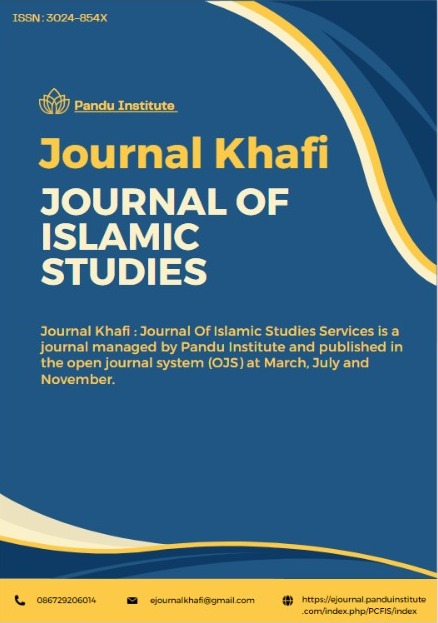HARI AKHIR PERSPEKTIF HADIS SUNNI DAN SYIAH
Abstract
This research aims to compare hadiths about the last days from Sunni and Shi'a perspectives through the analysis of two main books: al-Kafi by al-Kulaini and Sahih Bukhari and Sahih Muslim. Sunni and Shi'a are two groups in Islam that use hadith books as the main guide besides the Koran, but often experience difficulties in communication due to differences in the development and assessment of the quality of hadith. According to Shi'ite teachings, a hadith that is considered authentic must have a chain of sanad that extends to an imam who is ma'shum and a narrator who is fair and comes from the imamiyah group. Meanwhile, in the Sunni view, authentic hadith are those whose sanad connect directly to the Prophet Muhammad. with fair and habitual narrators. And free from shadz and `illat. The main problem discussed is what is the concept of the end of the world in the books of al-Kafi al-Kulaini and Sahih Bukhari? The method used in this research is a descriptive analysis method with a qualitative approach to explore meaning. The results of the analysis show that there are fundamental differences in the assessment of the quality of hadith between the two traditions which influence the concept of the end of the day in each tradition. In Al-Kafi's concept of the end of the day, there is pressure on the continuity of the sanad to the ma'shum imam and strict requirements for justice and permission of the transmitter. Meanwhile, in Sahih Bukhari and Sahih Muslim, the main focus is the continuity of the sanad to the Messenger of Allah as well as the assessment of the fairness and precision of the narrator. It is hoped that this study will provide a better understanding of the view of the end times in Sunni and Shi'a traditions as well as the role of the hadith books on the end times in Islam.
Downloads
References
Al-Bukhari, Abi Abdillah Muhammad Bin Ismail. Jami` Ash-Shohih, N.D.
Al-Kulaini, Muhammad Bin Ya`Kub. Ushul Al-Kafi. Beirut-Libanon, N.D.
An-Naisaburi, Imam Abi Husein Muslim Bin Hajjaj Al-Qusyairi. Shohih Muslim, N.D.
An-Nawawi, Imam. Syarah Shahih Muslim, N.D.
Che`Had, Soleh Bin. “Penafsiran Ayat Tentang Hari Kiamat Menurut Umar Sulaiman `Abdullah Al-Asyqar,” 2018.
Dewi, Oki Setiana. “Syiah: Dari Kemunculannya Hingga Perkembangannya Di Indonesia” 12 (2016).
Muttaqien, Faizal Zakki. “Fenomena Hari Akhir Perspektif Al-Qur`An: Studi Q.S. Al-Zalzalah (99) Menurut Al-Qurtubi,” 2020.
Rukmanasari. “Hari Kiamat Dalam Perspektif Al-Qur`An: Studi Terhadap Q.S. Al-Qari`Ah/101,” 2013.
Subhani, Ayataullah Ja`Far. Syi`Ah:Ajaran Dan Praktiknya, 2012.
Zaini, Nur. “Al Imam Al Mahdi Al Muntazhar Dalam Syi`Ah” 09 (2017).
Https://Quran.Kemenag.Go.Id/Quran/Per-Ayat/Surah/10?From=1&To=109
Https://Quran.Kemenag.Go.Id/Quran/Per-Ayat/Surah/7?From=1&To=206
Https://Quran.Kemenag.Go.Id/Quran/Per-Ayat/Surah/22?From=1&To=78
Https://Quran.Kemenag.Go.Id/Quran/Per-Ayat/Surah/101?From=1&To=11
Https://Quran.Kemenag.Go.Id/Quran/Per-Ayat/Surah/38?From=1&To=88







.png)







